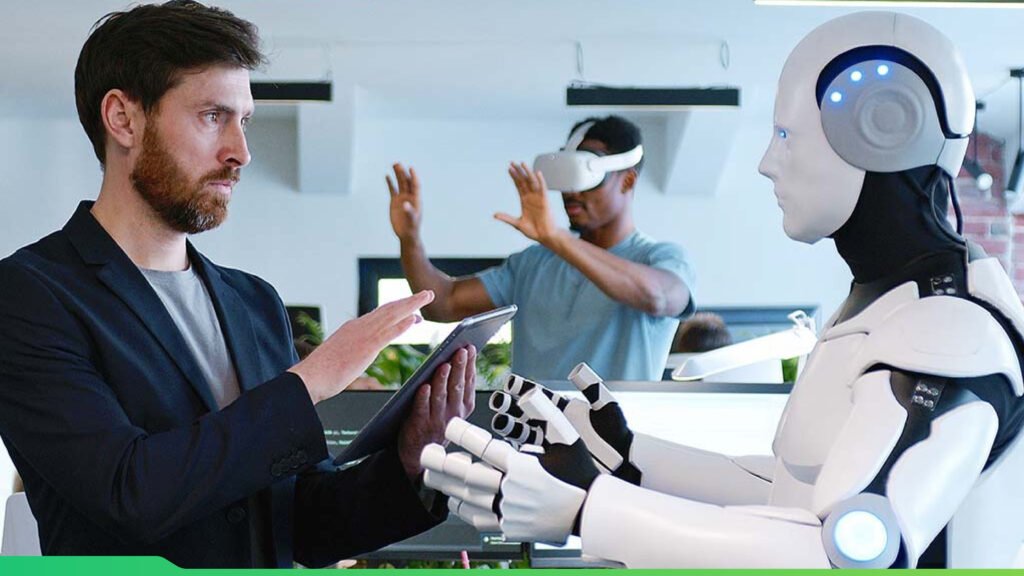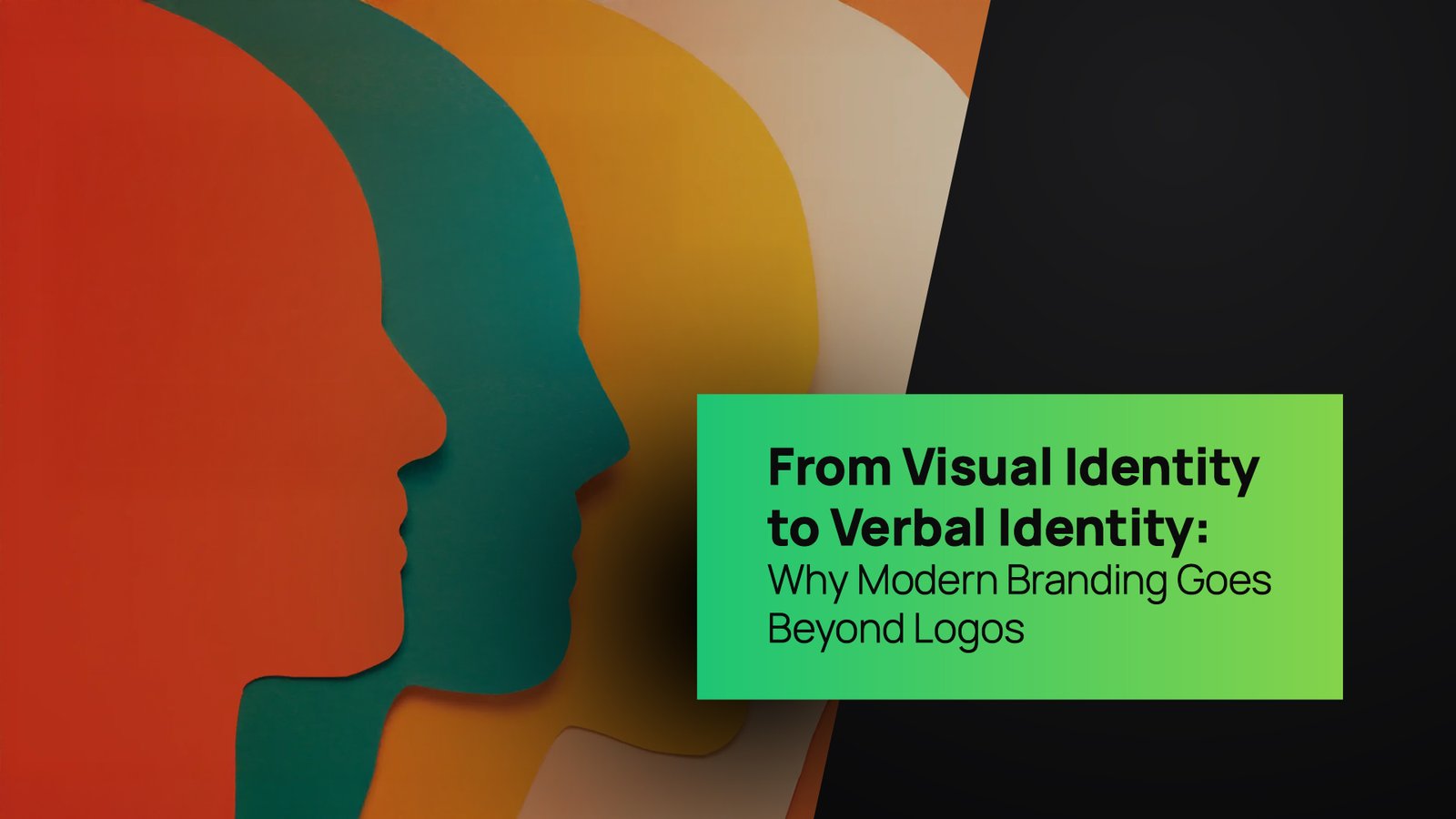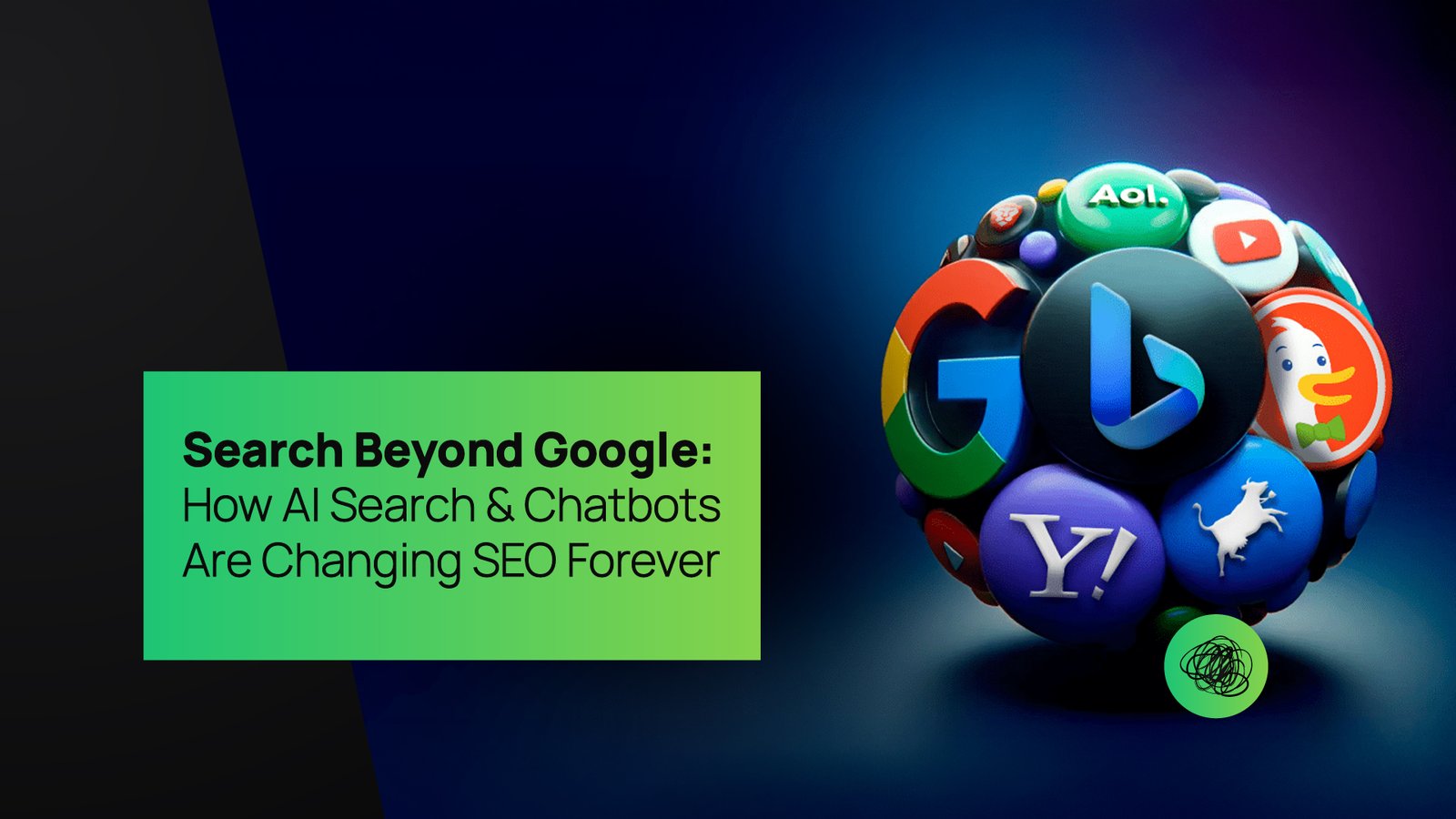Welcome to the future — where your website’s audience isn’t just made of humans scrolling, clicking, and converting, but also a growing army of intelligent bots, crawlers, and algorithms that judge, rank, and sometimes even rewrite what they see. If that sounds like a sci-fi movie where your homepage is secretly negotiating with ChatGPT about your bounce rate — well, welcome to the AI era.
At Thinkster, we’ve always believed that great web design is about empathy. But in 2025, empathy has two faces: the human who visits your site and the machine that interprets it. Designing for one without understanding the other is like hosting a dinner party and forgetting half your guests. The art (and science) of Designing for the AI Era lies in making your website feel intuitive to humans while being irresistibly legible to algorithms.
Why Designing for the AI Era Changes Everything
A few years ago, web design was all about looks and load times. Now? It’s about intelligence. AI has transformed how users discover, interact with, and judge digital experiences. Whether it’s Google’s RankBrain, ChatGPT-powered search, or voice assistants scanning your site’s schema, machines are now your silent audience.
But here’s the twist — the rise of AI doesn’t mean humans are out of the picture. Quite the opposite. The best-performing websites in 2025 are those that strike the perfect balance between AI-driven website design and emotional human experience. Think of your website as a bilingual genius: fluent in code, metadata, and machine logic — but equally fluent in storytelling, empathy, and humor.
At Thinkster, our design philosophy revolves around exactly that — websites that speak to both humans and machines without losing brand soul. Because while algorithms bring visibility, it’s emotion that brings conversion.
Understanding the Human + Machine Visitor Dynamic
Let’s face it — the “user” is no longer a singular being. When you think about who’s visiting your site, there are two simultaneous audiences.
First, the human visitor: they want seamless navigation, micro-interactions, visual delight, and a sense of trust. They judge your website subconsciously within seconds — color, typography, motion, tone, all matter.
Then, there’s the machine visitor: bots, AI models, and algorithms crawling through your structure, analyzing speed, schema, keywords, accessibility, and engagement metrics. They don’t “see” your site — they interpret it.
The secret? Human and AI website experience design — a philosophy where UX meets data semantics. It’s where storytelling and technical structure coexist beautifully. At Thinkster, we call this the “Smart Symbiosis” — websites that feel human but think machine.

The Rise of AI-Driven Website Design
Once upon a time, designers made decisions based on intuition. Today, design is driven by data — and increasingly, by artificial intelligence. With tools that can predict user behavior, generate layout variations, and even test color palettes in milliseconds, AI-driven website design is redefining how brands approach digital creativity.
But the real win isn’t automation — it’s augmentation. AI doesn’t replace the designer; it enhances them. It crunches numbers, maps patterns, and suggests optimizations, but it can’t replace the quirky human spark that defines Thinkster’s work. Our designers use AI as a creative partner — a co-pilot that helps refine, not dictate.
Imagine a homepage layout optimized through AI analytics, then handcrafted with Thinkster’s bold humor and storytelling. That’s design evolution — machine intelligence fueling human imagination. The result? A site that adapts, learns, and performs smarter every day.
Smart Website Design Strategies That Blend Both Worlds
Smart websites don’t just look intelligent — they behave intelligently. At Thinkster, our Smart website design strategies start with behavioral insights and end with adaptive architecture. We don’t just design for devices; we design for contexts, intents, and attention spans.
Let’s break down how this plays out in the real world (without bullet points, because we’re classy like that). A visitor lands on your website — the AI backend recognizes their location, device, and interaction history. It dynamically adjusts CTAs, recommends relevant content, and tweaks visuals for better engagement. The human sees a personalized experience; the machine sees structured data and perfect indexability.
That’s smart design — an interface that adapts in milliseconds, powered by machine learning but curated by human judgment. Every Thinkster project is built to scale this duality. Whether we’re designing for a startup or a global enterprise, we craft sites that perform on Google’s algorithmic radar and on your customer’s emotional radar.
The New Age of AI-Friendly Web Design
You’ve probably heard of mobile-friendly or SEO-friendly design. Well, 2025 just added another term to your digital dictionary: AI-friendly web design. This is where machine comprehension becomes a core design principle.
AI-friendly design isn’t about stuffing keywords or over-structuring pages. It’s about creating a website architecture that AI systems can easily crawl, contextualize, and integrate with. It involves semantic markup, clean code, consistent content tone, and accessible navigation patterns — all the things Google’s algorithms (and future AI crawlers) adore.
But Thinkster doesn’t stop at the technical layer. We make AI-friendly design look good. Because a website can’t just be readable to bots — it has to resonate with real people too. We craft visual stories that algorithms understand and humans fall in love with. It’s a delicate dance between precision and passion.
Personalization Powered by AI, Perfected by Humans
Every website visitor expects a “made-for-me” experience now. And AI makes it possible. Personalized CTAs, content recommendations, dynamic landing pages — the future of engagement is hyper-individualized. But here’s the catch: too much AI personalization can feel robotic.
That’s where Thinkster’s design philosophy flips the script. We combine AI-driven personalization with humanized design cues. For instance, while AI can decide what to show a user, our designers ensure it’s presented with warmth, humor, and context. You’ll never see a cold, data-drenched CTA on a Thinkster website — every element feels conversational, alive, and in tune with your brand personality.
This hybrid model is how Designing for the AI Era truly shines. Machines deliver precision. Humans deliver persuasion. Together, they create experiences that convert and connect.

How Thinkster Builds Adaptive, AI-Ready Websites
When Thinkster builds a website, we think beyond screens. We design ecosystems — digital identities that evolve with every algorithm update, UX trend, and user behavior shift. Our process fuses creativity, code, and cognition.
We start by mapping out machine behavior — what AI systems like Google, Bing, and even ChatGPT-based search crawlers look for. Then we balance it with human psychology — visual hierarchy, narrative flow, and emotional resonance.
Our developers integrate AI-readiness right into the foundation: schema markup, accessibility compliance, NLP-friendly content, and voice search optimization. Meanwhile, our designers inject the magic — bold layouts, scroll-triggered animations, and conversion-focused UX flows.
This Thinkster blend ensures your website doesn’t just survive in the AI era — it thrives in it. Because every click, scroll, and keyword is a conversation between human intuition and machine interpretation.
The Emotional Intelligence of Design
Here’s something the machines still can’t replicate: emotion. No matter how smart algorithms become, empathy remains a purely human advantage. That’s why Thinkster’s design approach is rooted in emotional intelligence.
A website shouldn’t just “work” — it should feel right. When users land on your page, every interaction should whisper your brand’s values, tone, and story. The layout, color palette, micro-copy, and motion should feel effortless — as if the website “gets” them.
While AI tools can predict where eyes will move or how long attention lasts, they can’t write a headline that makes someone smile or a tagline that sparks curiosity. That’s Thinkster’s playground — turning analytics into artistry. In Designing for the AI Era, emotional intelligence is your differentiator. Machines optimize. Humans inspire.

The Future of Web Design Is Collaborative — Human + AI
If 2020s web design was about responsiveness, 2030s web design will be about adaptiveness. The line between design and intelligence will blur completely. Websites will become cognitive entities — learning from behavior, predicting needs, and conversing with users through AI chat layers.
But even as this future unfolds, one truth will remain: design that connects humans emotionally will always outperform design that simply performs technically. The future belongs to hybrid creators — teams like Thinkster who treat AI as a creative ally, not a creative threat.
As we move deeper into the age of intelligent interfaces, brands that master AI-driven website design and AI-friendly web design while preserving human warmth will dominate. Because no algorithm can replace a brand with heart — and no human can outsmart a site that’s built to think.
Thinkster’s Takeaway — Designing for the AI Era Is Designing for Everyone
Here’s the Thinkster truth bomb: Designing for the AI Era isn’t about catering to machines or pandering to humans. It’s about inclusion — creating digital spaces where both coexist harmoniously.
We believe the smartest websites are the ones that feel effortless to explore but are secretly engineered for algorithmic excellence. They adapt, learn, and evolve — just like the people who build them.
So, as brands rush to make their websites more “AI-ready,” Thinkster reminds them to stay “human-ready.” Because in the end, every pixel, every keyword, every scroll gesture — is part of a conversation between emotion and intelligence.
The AI era isn’t coming — it’s already here. The question is: will your website keep up?
If you want a website that doesn’t just impress visitors but also impresses algorithms, Thinkster’s your partner in design crime. Let’s build something that talks to both — humans and machines — fluently.



